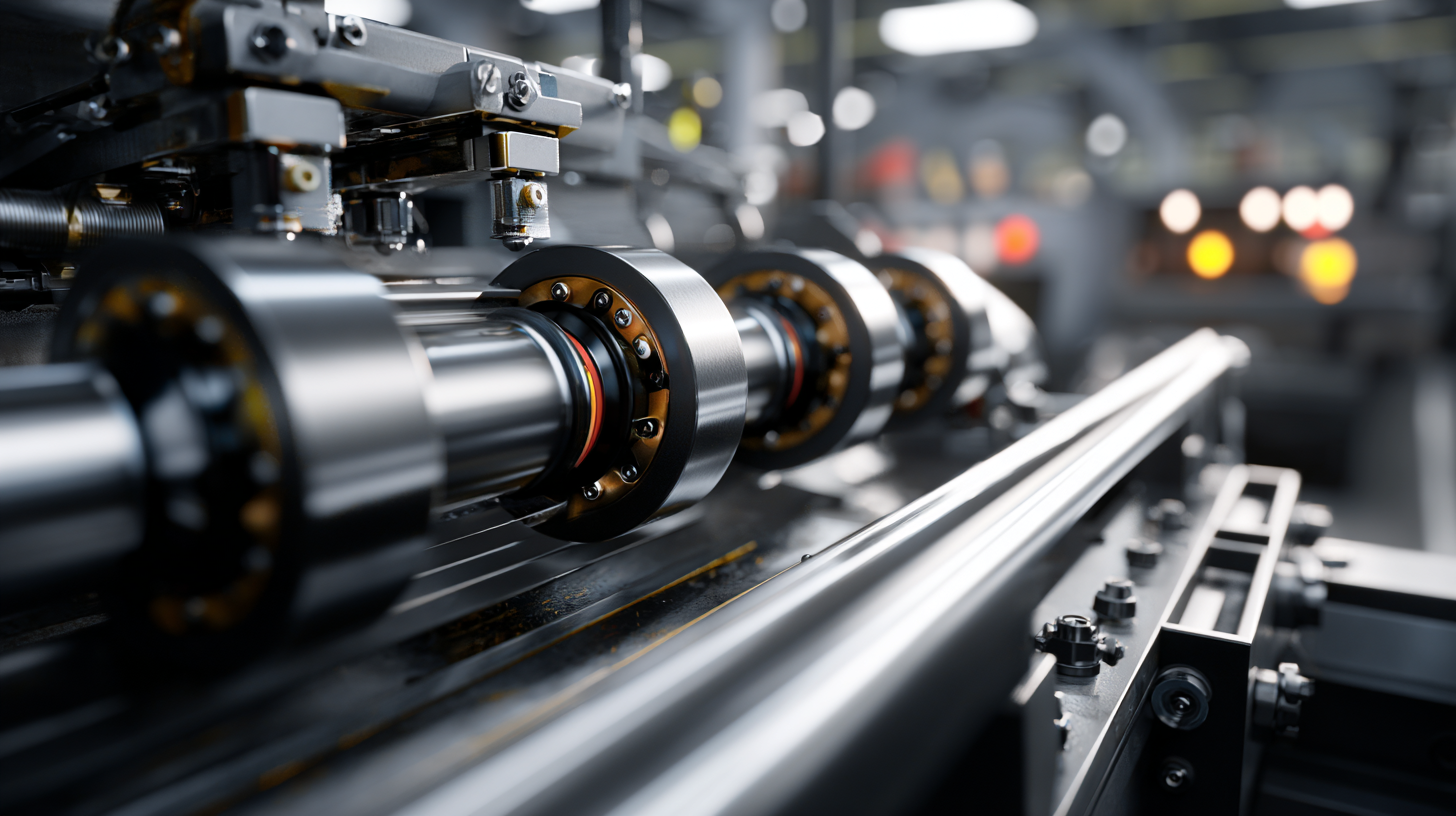Mastering Finishing Systems: A Comprehensive Guide to Enhancing Product Quality and Performance
 In the realm of manufacturing and product development, mastering finishing systems is crucial for achieving superior product quality and performance. Finishing systems play a vital role in enhancing the aesthetic and functional attributes of a wide variety of materials. This comprehensive guide will shed light on the essential techniques and processes involved in finishing systems, providing readers with actionable insights and strategies to optimize their operations.
In the realm of manufacturing and product development, mastering finishing systems is crucial for achieving superior product quality and performance. Finishing systems play a vital role in enhancing the aesthetic and functional attributes of a wide variety of materials. This comprehensive guide will shed light on the essential techniques and processes involved in finishing systems, providing readers with actionable insights and strategies to optimize their operations.
Whether you are a novice seeking to understand the basics or a seasoned professional aiming to refine your processes, this guide offers a wealth of knowledge on the various finishing methods available, their applications, and their impact on the final product. Join us as we explore how to effectively implement finishing systems that elevate your products and meet the demands of both market standards and consumer expectations.
Understanding the Fundamentals of Finishing Systems in Manufacturing
In modern manufacturing, finishing systems play a crucial role in ensuring product quality and performance. According to a recent report by IndustryWeek, nearly 65% of manufacturers identified finishing processes as key contributors to product durability and customer satisfaction. Understanding the fundamentals of these systems is essential for companies aiming to enhance their market competitiveness. Finishing includes various techniques—such as painting, plating, and coating—each selecting based on the material properties and the desired end-use of the product.

Moreover, advancements in finishing technologies have seen a significant shift towards automation and precision. A study from the Manufacturing Institute indicates that companies adopting automated finishing solutions can reduce production time by up to 30%, thus increasing overall efficiency. Embracing these innovations not only streamlines production but also elevates the consistency and quality of finished products. As industries continue to evolve, mastering the fundamentals of finishing systems is vital for businesses to thrive in a quality-driven marketplace.
Exploring the Impact of Finishing Techniques on Product Quality
Finishing techniques play a crucial role in determining the quality and performance of products across various industries. By enhancing the final appearance and durability of goods, these techniques not only improve aesthetic appeal but also maintain functionalities that influence consumer satisfaction. For instance, in manufacturing, the application of specific coatings and treatments can significantly affect the longevity and resistance of products, ensuring they meet rigorous standards and perform well in real-world conditions.
Furthermore, the relationship between finishing systems and supply chain optimization is vital. Effectively managing the finishing processes within the supply chain can lead to improved quality control and product consistency from raw materials to the final product. As businesses strive to innovate and adapt to consumer demands, understanding the intricate connections between finishing techniques and overall product quality becomes essential. This exploration not only highlights the significance of these techniques but also emphasizes their influence on consumer behavior and market trends.

Identifying Common Challenges in Finishing Processes and Solutions
Identifying and developing talent in sports involves navigating various challenges that can hinder an athlete's potential. A significant obstacle is the inconsistency in talent identification methods. According to a report by the Sports Science Institute, up to 70% of young athletes may not receive adequate scouting due to reliance on outdated evaluation criteria. This discrepancy often leads to the oversight of highly skilled individuals who do not fit conventional profiles.
To address this issue, sports organizations can implement data-driven technologies to enhance their recruitment processes. For example, leveraging performance analytics and biomechanical data can create a more comprehensive assessment framework, allowing coaches to identify talent that may otherwise go unnoticed. Additionally, investing in training programs that cater to a diverse range of skills and backgrounds can foster a more inclusive environment, ultimately enriching the talent pool.
Furthermore, nurturing identified talent poses another challenge, especially with the lack of structured development pathways. Research from the Athlete Development Network indicates that over 60% of young athletes abandon their sports due to inadequate support systems. Establishing mentorship programs and personalized development plans can provide the necessary structure and guidance, ensuring athletes reach their full potential. By addressing these challenges with informed strategies, the sports industry can significantly enhance athlete quality and performance.
Mastering Finishing Systems: Product Quality and Performance Metrics
This bar chart illustrates the assessment of various quality metrics in finishing processes. Each metric represents a different aspect of product quality, with values shown as percentages. The aim is to identify strengths and opportunities for improvement in finishing systems to enhance overall product performance.
Innovative Technologies in Finishing Systems for Enhanced Performance
Innovative technologies in finishing systems play a crucial role in enhancing product quality and performance across various industries. These advancements not only streamline production processes but also ensure that the final products meet stringent quality standards. Techniques such as automated sanding, robotic polishing, and advanced coating applications have transformed traditional finishing methods, enabling manufacturers to achieve superior surface finishes and increased durability. Investing in these technologies can significantly reduce labor costs and improve overall efficiency in manufacturing.
**Tips:** Consider integrating automated systems to minimize human error and optimize the finishing process. Regularly update your equipment to leverage the latest technological advancements, which can lead to enhanced performance and longevity of the machinery. Furthermore, training employees on new technologies will ensure smooth operations and maintenance, ultimately resulting in better product outcomes.
Additionally, innovative finishing methods, such as nanotechnology-based coatings and environmentally friendly products, are gaining momentum. These not only offer superior performance but also align with sustainability initiatives that are increasingly important in today’s marketplace. Embracing such technologies can provide a competitive edge while also catering to the growing demand for eco-conscious products.
**Tips:** Explore partnerships with technology providers to stay ahead of industry trends and ensure that your finishing systems are equipped with cutting-edge solutions. Be proactive in sourcing sustainable raw materials that can complement your finishing processes, thus appealing to eco-aware consumers.
Best Practices for Implementing Effective Finishing Strategies in Production
In the contemporary manufacturing landscape, implementing effective finishing strategies is essential for enhancing product quality and performance. Finishing processes not only improve aesthetics but also contribute to durability and functionality. To succeed in this endeavor, businesses need to integrate best practices that align with their unique production requirements. For instance, adopting advanced techniques in supply chain management can minimize delays and reduce costs, enabling smoother transitions from raw materials to finished goods.
Tips for Implementing Effective Finishing Strategies:
- 1. Leverage Automation: Embrace automation technologies that streamline finishing processes. By automating specific tasks, companies can enhance efficiency and reduce errors, ultimately leading to improved product quality.
- 2. Optimize Processes: Regularly analyze your finishing workflows to identify bottlenecks or inefficiencies. Implementing strategies to minimize fabric processing loss, as seen in recent textile industry discussions, can significantly decrease rejection rates and improve overall output.
- 3. Foster Digital Collaboration: Encourage a collaborative environment among your workforce by utilizing digital tools. This interconnected approach can propel innovations in finishing systems, allowing for quicker responses to production challenges and adapting to changing market demands.
